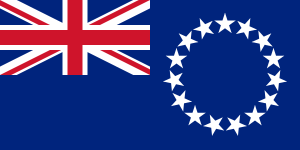 What climate changes are occurring in the Cook Islands, and what’s next?
What climate changes are occurring in the Cook Islands, and what’s next?
- Temperatures are increasing, rainfall is increasing, and extreme rainfall days will increase: Data shows a clear increase in annual rainfall around Perhyn, while temperatures have increased at a rate of 0.04°C in Rarotonga.
- Sea levels have risen: With a rise of 4mm per year since 1993, the sea level around the Cook Islands is increasing quicker than the global average of 2.8-3.6mm per year. Mr Kruger of the Secretariat of the Pacific Community (SPC) believes this is problematic, as it further exposes private property, coastal communities, coastal ecosystems and public infrastructure already considered vulnerable to extreme weather events (source here). Sea level rises combined with natural year to year changes will increase the impacts of such extreme events, like coastal flooding and storm surges.
- More intense tropical cyclones: While it’s predicted they may decrease in frequency, cyclones that do occur will be more intense, and potentially much more damaging.
- The ocean is more acidic, and will become more so: More acidic oceans is bad news for many marine ecosystems, threatening corals, mussels, clans, oysters and shellfish. This threatens the food security in countries such as the Cook Islands.
——————————————————————
More detailed information from the Australian Government’s ‘Pacific Climate Change Science Program’ can be downloaded here –> Cook Islands Climate Change Factsheet PDF.
What has been the Government’s response to climate change?
Director of Cook Islands Emergency Management Charles Carlson made a statement at the 2013 Global Platform for Disaster Risk Reduction. He outlined the developments his country had made since informing the same platform in 2011 that “it was serious about disaster risk reduction and climate change adaptation”. The full statement can be read by clicking this link.
——————————————————————
We’re currently in contact with a number of our team coordinators, representatives and volunteers on the ground in the Pacific Region – compiling information on the key climate issues facing the country, what our teams are doing locally, and how local groups are standing up and confronting the challenge of climate change.
As we compile more information, this link will be appropriately updated. So check back soon!
350 Pacific team
